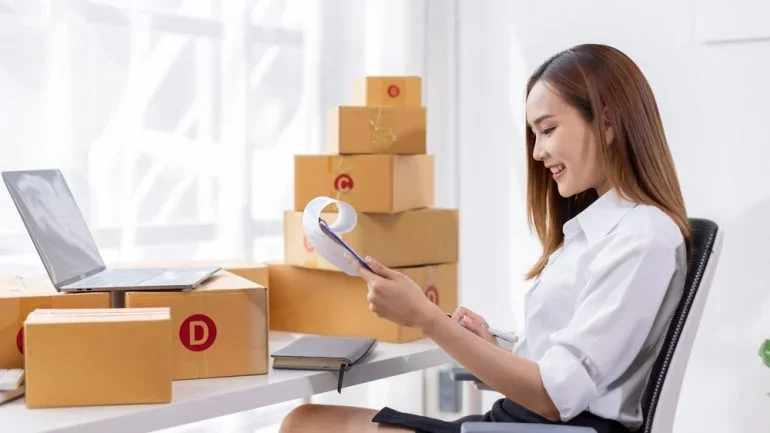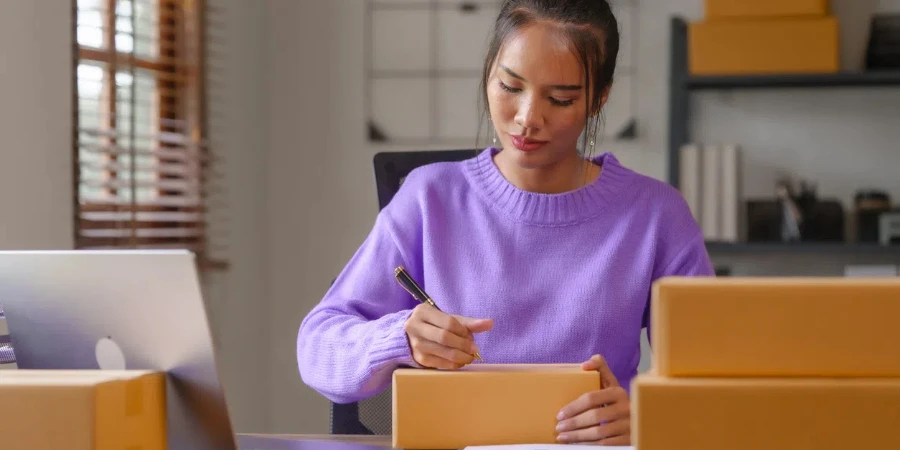Personalised packaging has emerged as a powerful tool for brands looking to connect with consumers on a deeper level.

In today’s consumer-driven market, packaging is no longer just about protecting a product; it has evolved into a powerful tool for brands to connect with their audience. Personalised packaging, tailored to the needs and preferences of individual consumers, has become a key differentiator in a crowded marketplace.
With advances in digital printing and data analytics, brands can now offer customised packaging that resonates on a personal level, creating memorable experiences that drive brand loyalty.
This trend has transformed the role of packaging, making it a crucial part of the overall customer journey.
The rise of personalised packaging
The rise of personalised packaging can be attributed to the growing demand for unique and customised experiences. As consumers seek products that reflect their individuality, brands are increasingly using personalised packaging to create a sense of exclusivity.
This shift has been fuelled by advances in technology, enabling brands to design and produce packaging that caters to the preferences of specific target audiences.
Digital printing technologies, for example, have made it possible to produce packaging with intricate designs and unique messages on a mass scale. Coca-Cola’s “Share a Coke” campaign is one of the most iconic examples of this trend.
By printing individual names on bottles, the brand was able to create a sense of personal connection with consumers, which led to a surge in sales and brand engagement.
This campaign demonstrated the immense potential of personalised packaging in fostering a deeper relationship between consumers and brands.
Furthermore, personalised packaging is no longer limited to names or messages. It has expanded to include elements such as colours, shapes, and even scents that appeal to different consumer segments.
As brands continue to explore the possibilities of personalisation, packaging has become a powerful way to communicate a brand’s values and connect with consumers on an emotional level.
The impact on consumer experience
Personalised packaging enhances the overall consumer experience by making the product feel special and tailored to individual preferences. It creates a sense of excitement and anticipation, which can turn a mundane unboxing moment into a memorable experience.
In an era where consumers are increasingly sharing their purchases on social media, personalised packaging offers an opportunity for brands to generate organic exposure and word-of-mouth marketing.
Studies have shown that consumers are more likely to make repeat purchases from brands that offer personalised packaging. The emotional connection established through a customised experience encourages brand loyalty, as consumers feel valued and appreciated.
This approach is particularly effective in the beauty, fashion, and food industries, where packaging plays a significant role in the overall perception of a product.
Brands that invest in personalised packaging are also better positioned to tap into the power of storytelling. By incorporating elements that reflect a customer’s preferences, lifestyle, or values, packaging can tell a story that resonates with the consumer.
This storytelling aspect not only enhances the unboxing experience but also creates a lasting impression that can influence future purchasing decisions.
How brands are leveraging technology for personalisation
Technology has been a driving force behind the growth of personalised packaging, allowing brands to create customised designs that cater to a diverse audience.
Digital printing is at the forefront of this transformation, enabling brands to produce packaging with high-quality graphics, variable data, and unique messages without incurring significant costs.
One notable example of technology-driven personalisation is the use of QR codes on packaging. These codes provide consumers with access to exclusive content, such as personalised offers, product information, or interactive experiences, directly on their smartphones. This not only enhances the value of the packaging but also creates a seamless connection between the physical and digital worlds.
Augmented reality (AR) is another technology that has made personalised packaging more engaging. By incorporating AR elements into packaging, brands can create interactive experiences that captivate consumers and encourage them to engage with the product.
For instance, wine brands have used AR to provide consumers with information about the origin of the wine, tasting notes, and even pairing suggestions, all through their smartphones.
Data analytics also plays a crucial role in driving personalised packaging strategies. By analysing consumer behaviour and preferences, brands can tailor their packaging designs to meet the needs of different customer segments.
This data-driven approach ensures that packaging not only looks appealing but also resonates with the target audience, making it more likely to drive sales and brand loyalty.
Sustainability and personalised packaging
As consumers become more environmentally conscious, sustainability has emerged as a key consideration in personalised packaging. Brands are increasingly seeking ways to create customised packaging solutions that minimise waste and reduce their environmental impact.
This has led to the development of eco-friendly materials, such as biodegradable and recyclable packaging, which can be personalised without compromising sustainability.
Digital printing is inherently more sustainable than traditional printing methods, as it eliminates the need for plates and reduces material waste. This makes it an ideal solution for producing personalised packaging in small quantities, allowing brands to respond quickly to changes in consumer preferences while minimising their carbon footprint.
Moreover, brands are exploring the use of smart packaging technologies, such as RFID tags and NFC chips, to provide personalised information while reducing the need for excessive packaging materials.
These technologies enable brands to create a more interactive and informative experience for consumers, without the need for additional printed materials.
The future of personalised packaging
The future of personalised packaging looks promising, with technology continuing to play a pivotal role in its evolution. As brands strive to create more meaningful connections with consumers, the demand for customised packaging solutions is expected to grow. Innovations such as 3D printing,
AI-driven design, and advanced data analytics will further enhance the ability of brands to create packaging that is truly unique and tailored to individual preferences.
Personalised packaging is not just a passing trend; it represents a fundamental shift in how brands interact with consumers. It has the potential to transform the way products are marketed and experienced, making packaging an essential part of the overall brand strategy.
For businesses looking to stay ahead of the competition, embracing personalised packaging offers a way to stand out in a crowded marketplace and build lasting relationships with consumers.
By investing in technologies that enable personalisation and sustainability, brands can create packaging that not only captures attention but also delivers a meaningful and memorable experience.
Source from Packaging Gateway
Disclaimer: The information set forth above is provided by packaging-gateway.com independently of Alibaba.com. Alibaba.com makes no representation and warranties as to the quality and reliability of the seller and products. Alibaba.com expressly disclaims any liability for breaches pertaining to the copyright of content.




